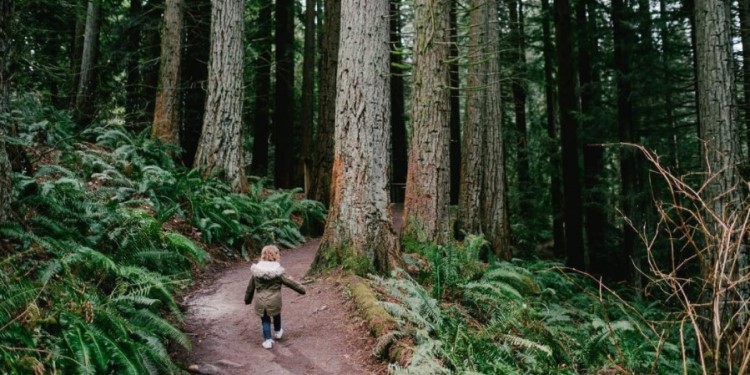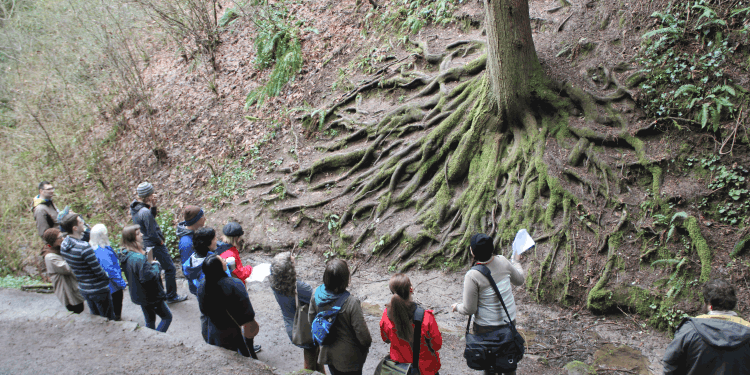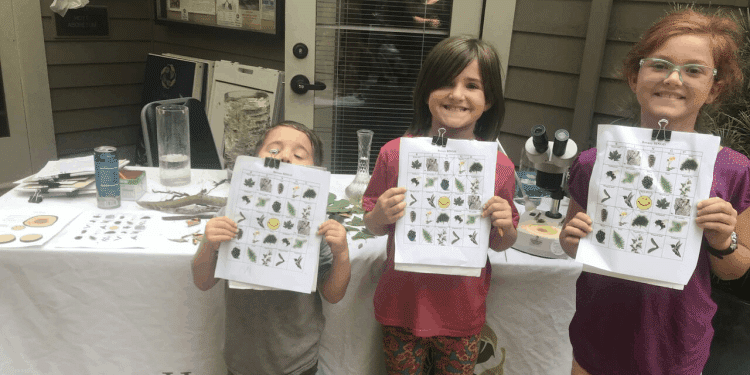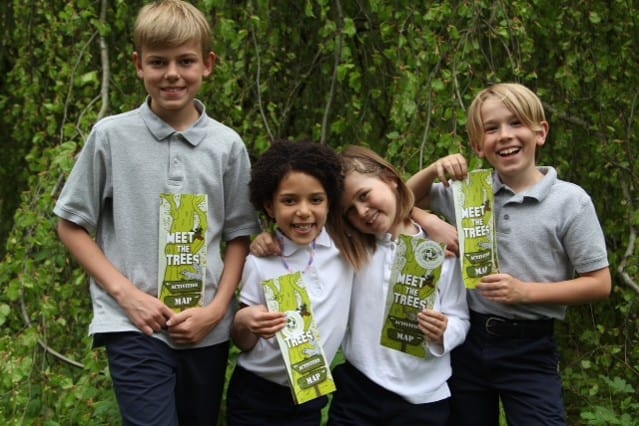
Thanks to Hoyt Arboretum Friends for these great tips to explore nature with kids, including ongoing fun and educational activities at Hoyt Arboretum!
The availability of vaccines and weather that’s favorable to outdoor activities means that parents and their children can reenter society with a renewed sense of connection to the world around them. As opportunities to safely interact with others increase, families may still consider prioritizing outdoor spaces for the added health precaution and the beauty of a Pacific Northwest summer. In doing so, there are fun ways to enhance the developmental benefits that a child gets from being outside.
Spending time outdoors provides a range of emotional and mental benefits for young children. Parents in Portland, Oregon and surrounding areas are fortunate to have multiple parks, gardens, and trails within the city’s limits to take advantage of. While parks like Hoyt Arboretum are slowly bringing back in-person youth and family educational events, there are elements of organized programming that can be easily adopted for any time, place, or day of the week. Below, find a short list of ways to add education and hands-on activities to an outdoor outing with the family.
1. Native Plant Bingo
Using a list of flowers and trees that are native to the area, create a mix of hand-drawn or digital bingo cards for the family to take on the next walk through a park or on a trail. A list of Portland-area native plants can be found here. At a Portland Parks & Recreation nature patch, families can also see native plants up close in an educational display. While native plants are a great starting point, bingo cards can be themed for birds, bugs, and even certain species of plants.
2. Nature Scavenger Hunt
Every Thursday during the spring and summer, Pop Up Nature! scavenger hunts take place at Hoyt Arboretum, but families can recreate one any day of the week with a piece of paper, pencil, and clipboard. Use five to ten photos of things commonly seen in nature (think: a leaf shape, a very common bug, a bird’s claw print) and see who can find them all first! Don’t forget to have a prize for the winner.
3. Nature Journaling
Journaling is a great way for people of all ages to improve their mental state and interact with nature. For artsier members of the family, a journal, some pencils, and some portable watercolors or markers are a great way to engage with the outdoors. Bring a snack, find a comfy spot where there’s something pretty to draw or write about, and scribble away. There are no rules with journaling; just experiment and have fun! Hoyt Arboretum also offers a weekly Nature Journaling class.
4. Home Experiments
Sometimes you’re just not able to make it to a park or trail, but that’s not a problem. Once a month, Hoyt Arboretum’s Junior Naturalists get a set of at-home educational activities to try, and they include engaging experiments using materials that can be found right at home. One of the most recent experiments involves placing branches in four different types of liquid to see which ones stay green the longest. These free activities are designed for students between the ages of 7 to 12, and families can see the list of past activities – including some nature bingo cards! – here.
Nature lovers of any age can benefit from interactive outdoor activity. To enjoy Hoyt Arboretum’s family offerings over the next few months, visit their youth programs page to learn more.
- May 2024 Digital Issue - April 23, 2024
- Tween/Teen Summer Camps & Jobs - April 22, 2024
- Featured Camp of the Week: Classical Ballet Academy - April 22, 2024





